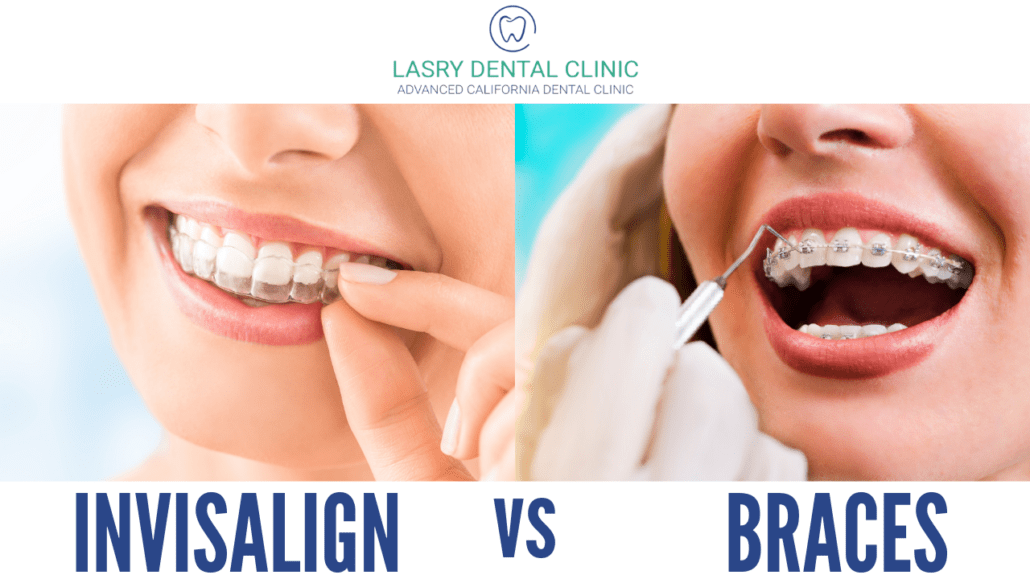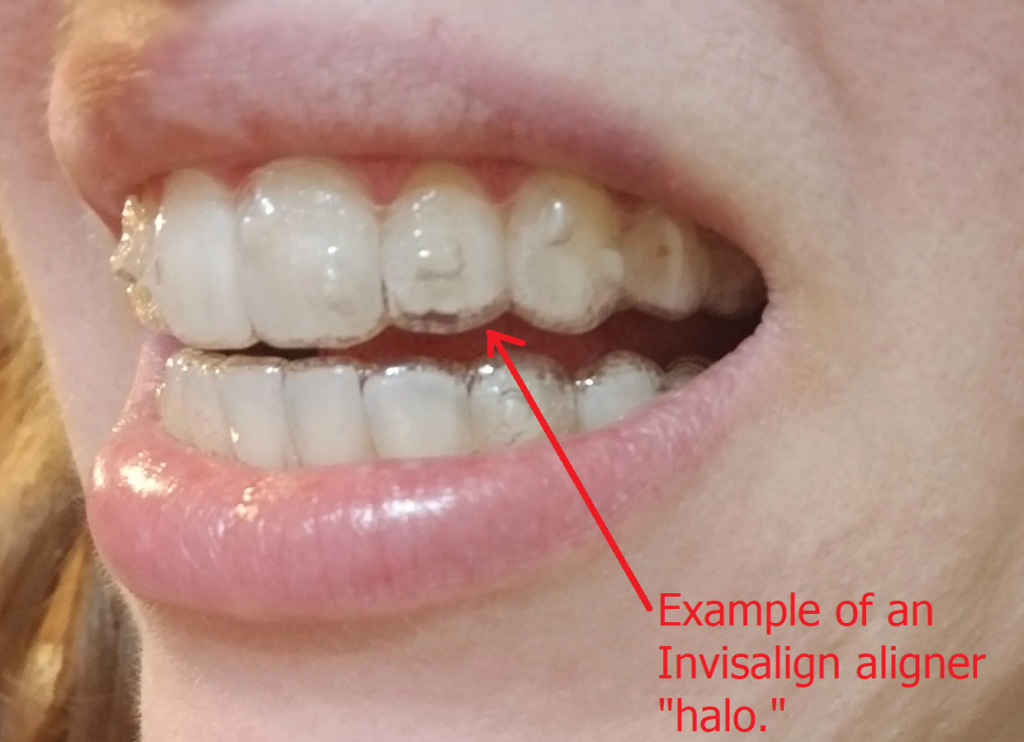How Invisalign Works: Your Overview to Clear Aligners and Their Effectiveness
How Invisalign Works: Your Overview to Clear Aligners and Their Effectiveness
Blog Article
Invisalign vs. Typical Dental braces: Which Alternative Is Right for You?
When thinking about orthodontic therapy, the choice in between Invisalign and conventional dental braces provides numerous vital aspects that merit mindful evaluation. Invisalign uses a very discreet option with removable aligners, while typical braces supply a more noticeable yet reliable option for severe imbalance.
Review of Therapy Choices

On the other hand, traditional dental braces contain steel braces and cords that are adhered to the teeth. This approach uses constant pressure in time to accomplish placement. While efficient for complicated orthodontic concerns, conventional braces require routine gos to for adjustments and can pose obstacles in preserving dental health due to the trouble of cleaning about wires and brackets.
Both options have their values, and the selection commonly rests on specific oral conditions, lifestyle choices, and individual compliance. Eventually, getting in touch with an orthodontic professional is essential for figuring out the most suitable treatment strategy tailored to specific needs. Comprehending the subtleties of each option can considerably influence the general success of orthodontic therapy.
Aesthetic Factors To Consider
A substantial element influencing the selection between Invisalign and typical dental braces is the aesthetic allure each therapy supplies. Invisalign aligners are crafted from clear plastic, making them virtually invisible when put on. This discreet appearance is specifically interesting young adults and adults who may really feel awkward regarding their orthodontic treatment. The capability to keep a natural smile throughout the positioning process can substantially enhance the individual's confidence in social and professional setups.
On the other hand, standard braces contain steel brackets and cords, which can be more recognizable. While developments in orthodontic modern technology have actually brought about the advancement of smaller sized braces and tinted elastics, typical braces still keep an even more noticeable account. For some individuals, the presence of braces might deter them from seeking essential therapy.
Eventually, the choice in between Invisalign and conventional braces may pivot on personal preferences concerning looks. People who focus on discretion usually lean towards Invisalign, while those that are less worried concerning visibility might go with conventional braces. Recognizing the visual ramifications of each option is vital for making an informed choice that lines up with one's way of life and choices.
Convenience and Convenience

In terms of convenience, Invisalign aligners are detachable, making it possible for clients to enjoy their preferred foods without constraint and maintain ideal oral health. Brushing and flossing are simplified, as the aligners can be secured during these routines, whereas conventional dental braces call for mindful steering around braces and wires.
In addition, Invisalign's modern system permits fewer orthodontic check outs. People typically receive multiple sets of aligners simultaneously, which can improve the therapy procedure and minimize time spent in the orthodontist's chair. On the other hand, typical dental braces necessitate routine click here to find out more adjustments, making them much less hassle-free for those with hectic schedules. Invisalign. Overall, the convenience and convenience of Invisalign make it an enticing choice for several individuals seeking orthodontic therapy.
Treatment Period and Performance
While both Invisalign and traditional dental braces are reliable in remedying oral imbalances, the duration of therapy can vary considerably between the 2 choices. Commonly, Invisalign treatment can take anywhere from 12 to 18 months, depending upon the complexity visit our website of the instance. The clear aligners function by gradually shifting teeth right into their preferred placements, and routine follow-ups with an orthodontist help ensure development continues to be on track.
In contrast, traditional braces commonly call for a longer dedication, typically varying from 18 months to 3 years. This is because of their set nature and the use of braces and wires, which can be much more effective for severe misalignments and complex situations (Invisalign). The therapy effectiveness of standard braces is well-documented, as they allow for specific modifications and greater control over tooth movement
Inevitably, the choice between Invisalign and conventional braces may hinge on both the expected treatment duration and the specific oral issues handy. Consulting with an orthodontist is important, as navigate here they can give customized referrals based on specific requirements, ensuring the picked technique lines up with preferred results and timeframes.
Price Comparison and Insurance Options
Price plays a significant duty in the decision-making procedure for people considering orthodontic treatment, whether deciding for Invisalign or typical dental braces. On average, the price of Invisalign varieties from $3,000 to $8,000, while conventional braces usually set you back between $2,000 and $6,000. Factors influencing these expenses consist of the complexity of the instance, the period of therapy, and geographical area.
Insurance policy coverage can significantly influence out-of-pocket costs. Lots of dental insurance plans supply partial insurance coverage for orthodontic therapies, however the specifics can vary commonly. It is essential for individuals to evaluate their insurance coverage plans to determine the degree of protection for either option. Normally, standard braces might be more frequently covered by insurance coverage strategies contrasted to Invisalign, which some insurers classify as an aesthetic treatment.
Furthermore, several orthodontic methods offer flexible layaway plan, making both therapy options extra easily accessible. Individuals must ask about potential funding choices and discounts for ahead of time repayments. Assessing the overall price, including insurance coverage advantages and repayment plans, is vital for making an informed choice that straightens with both aesthetic preferences and spending plan factors to consider.

Final Thought
In recap, the option in between Invisalign and traditional dental braces pivots on multiple aspects, consisting of aesthetic choices, convenience, therapy period, and cost. Invisalign provides a discreet, removable alternative that assists in oral health and nutritional versatility, while conventional braces may be preferable for intricate dental problems and typically come with a lower price point. Eventually, appointment with an orthodontist is vital to analyze individual situations and determine one of the most suitable treatment alternative for accomplishing optimal dental placement.
When considering orthodontic therapy, the choice in between Invisalign and typical braces offers several vital aspects that merit mindful analysis.Comparing Invisalign and typical braces exposes distinctive treatment alternatives for orthodontic improvement.While both Invisalign and traditional braces are efficient in fixing oral misalignments, the duration of treatment can vary considerably between the two choices.Price plays a significant role in the decision-making procedure for individuals taking into consideration orthodontic therapy, whether opting for Invisalign or traditional dental braces.In recap, the selection between Invisalign and traditional dental braces pivots on numerous aspects, including visual preferences, convenience, treatment duration, and price.
Report this page